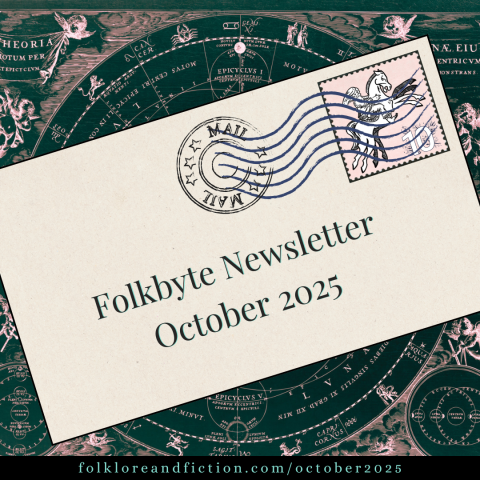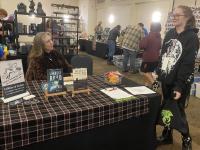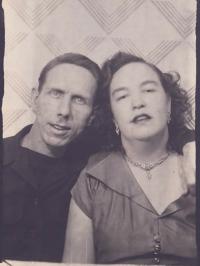
Greetings, and welcome to the October 2025 edition of the Folkbyte newsletter. This edition comes to you late because of my guest appearance at Sydney Comic Con last weekend. While I'm on the topic, there will be no newsletter in November because I'll be at the World Fantasy Convention in England and thereafter in Scotland for a week. But you may be certain I'll have plenty to tell you in December!
Dispatches from the Word Mines
Sydney Comic Con

Last weekend, I was a guest at Sydney Comic Con in Sydney, Nova Scotia. I taught two workshops there; Folk Narrative for Writers and Folklore Plots and Motifs for Writers, and I participated in a writing panel with several local authors. Most importantly, I had the opportunity to chat about folklore and writing with talented young artists and storytellers. Many thanks to the Sydney Comic Con committee for inviting me! It was a great weekend all around.
World Fantasy Convention Schedule
I'll be moderating the following panel at the World Fantasy Convention this year:
Shapeshifting Stories: Saturday, 12:00 PM, Buckingham Panel Room
Moderator: Dr. Ceallaigh S. MacCath-Moran
Panellists: Abie Longstaff, Anand Gandhi, Lucy Hounsom, V L Bovalino
Description: Fairy tales, legends, and myths might well be among the most ancient of folk narratives, having their roots in the oral traditions of pre-literate societies. These stories have been reimagined, adapted, and subverted by writers for centuries, from Shakespeare to Disney to Anne Sexton. The 21st century has seen the popularity of such retellings explode, along with new academic interest in their many manifestations. Why? This panel of folk narrative experts seeks to answer this question and many more about the history, meaning, and purpose of these narratives around the world.
"A high seat was prepared for her."
At that time there was a great dearth in Greenland; those who had been out on fishing expeditions had caught little, and some had not returned. There was in the settlement the woman whose name was Thorbjorg. She was a prophetess (spae-queen), and was called Litilvolva (little sybil). She had had nine sisters, and they were all spae-queens, and she was the only one now living. It was a custom of Thorbjorg, in the winter time, to make a circuit, and people invited her to their houses, especially those who had any curiosity about the season, or desired to know their fate; and inasmuch as Thorkell was chief franklin thereabouts, he considered that it concerned him to know when the scarcity which overhung the settlement should cease.[1]
The ceremony that follows is a window into the supernatural beliefs and practices of pre-Christian, Northern Europe. A high seat is prepared for Thorbjorg, who arrives bedecked in finery and prophesies for the benefit of the people gathered to see her. This ceremony has been revitalized and reimagined among practitioners of contemporary Nordic Animism, especially among mature women who practice spaecraft/seiðr/Northern European witchcraft. I'm sharing this information both as an ethnographer and a practitioner because I will be on the high seat in England at the Clophill Centre outside London on Sunday, November 2nd, between the World Fantasy Convention and my Scotland retreat. My good friend Andreas Kornevall will be facilitating the event, which is open to anyone with a serious interest in the work we'll be doing there. You can find out more about the event here.
I'm working on the Ritual chapter of The Storyteller's Guide to Folklore right now, so it's a good time to combine that work with a discussion of what the High Seat ritual is, where it's attested in early literature, how it's re-imagined now, and what I bring to it. There's also quite a bit of precedent in folkloristics for insider autoethnography, and there are a number of Pagan researchers before me who have done similar ethnographic work. So look for a Special Dispatch in December as a preliminary effort at this. I might also write an academic paper about it for later publication.
Last Month on Social Media
In September, I shared several storytelling posts built around motifs from the Motif-Index of Folk-Literature. My social media experiment continues in October with themed posts on thresholds, harvests, and ancestors in folklore and folkloristics. I'm leaving for England and Scotland on October 26th and won't return until November 10th, so this month's posts will run until October 17th then and stop. When I return, I'll be retiring them in favour of continuing the Special Dispatch series as a second monthly mailing to subscribers. I'll have a lot to write about after Scotland, and I'd rather spend my outreach time sharing an autoethnographic account of my experience in the high seat, reflecting as a folklorist on my visits to the sites where women were murdered as witches, and so on. I'll also be preparing and posting about those two short courses I told you about a few months ago, so be on the lookout for that if you're keen to take a short course this winter.
From the Folklore & Fiction Archive
In July 2019, I released a lengthy Folklore & Fiction dispatch about Child ballads and the role of memory in the composition and performance of these songs. Here's an excerpt:
I wonder if a contemporary person could compose, perform, and transmit a new ballad of the style Francis James Child collected. I tend to agree with Gordon Hall Gerould that these pieces need to be shaped by generations of learners, singers, and communities not tied to the written word and invested in live performances, but perhaps this is the performance theorist in me thinking about the matter. However, the writer sees an opportunity to create fictional communities around the craft of fictional ballad composition. Insert a historical setting shifted to an alternate timeline, a bit of fantastical magic, or an intergalactic generation ship, and the seed of a novel emerges.
You can read the whole dispatch here.

It will be Samhain soon. In my faith tradition, this is the time of year when we remember and reflect upon the complex relationships we have with our ancestors. So I'll wish you a blessed season of communion with your beloved dead and end with this photo of my maternal grandparents MC and June when they were young.
Yours from a red and gold Cape Breton autumn,
Ceallaigh
Footnotes
- Sephton, Rev. J. “The Project Gutenberg eBook of Eirik The Red’s Saga.” Project Gutenberg. Accessed October 7, 2025. https://www.gutenberg.org/files/17946/17946-h/17946-h.htm.
Dr. Ceallaigh S. MacCath-Moran holds B.A. in Celtic Studies from the University of Toronto, an M.A. in English and Creative Writing from the University of Maine, and a PhD in Folklore from Memorial University of Newfoundland and Labrador. She's also an author, poet, and musician under the names Ceallaigh S. MacCath-Moran and C.S. MacCath. Her long-running Folklore & Fiction project integrates these passions with a focus on folklore scholarship aimed at storytellers, and she brings a deep appreciation of animism, ecology, and folkloristics to her own storytelling. You can find her online at csmaccath.com, folkloreandfiction.com, and linktr.ee/csmaccath.
© 2025 Dr. Ceallaigh S. MacCath-Moran. All rights reserved unless Creative Commons licensing is specifically applied. To read the full "Copyright Statement and Usage Guide," visit https://csmaccath.com/copyright.